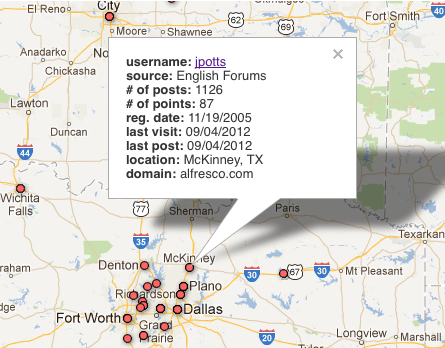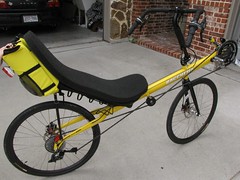Someone recently asked how to create Alfresco Share sites with a default folder structure. Currently, out-of-the-box, when you create an Alfresco Share site, the document library is empty. This person instead wanted to define a set of folders that would be created in the document library when a new Alfresco Share site is created.
Although this exact functionality is not available out-of-the-box, there is something similar. It’s called a “space template”. Space templates have been in the product since the early days but haven’t yet been exposed to Alfresco Share. In the old Alfrexsco Explorer client you could specify a space template when you created a new folder, and the resulting folder would have the same set of folders and documents that were present in the template.
With a little bit of work using the out-of-the-box extension points we can get Alfresco to use space templates when creating new sites in Share. I’ve created this as an add-on and the code lives on GitHub. I thought it might be instructive to review how it works here.
Approach
The first thing to realize is that a space template isn’t special. It’s just a folder that happens to live in Data Dictionary/Space Templates. In fact, there aren’t any API calls specific to space templates. If you go looking for a createFolderFromTemplate() method on a Folder object you’ll be disappointed. When the Alfresco Explorer client creates a folder from a template, it simply finds the template folder and copies its contents into the newly-created folder.
On the Alfresco Share side, a site isn’t that special either. It’s just a special type of folder. The document library that sits within a Share site is also just a folder, albeit a specially-named folder with an aspect. Normally, the document library folder does not get created until the first user actually opens the site and navigates to the document library.
So all we really need to do is write some code that gets called when a site is created, looks up the space template, and then creates the document library folder with the contents of the space template.
What’s the best way for the code to know which space template to use? One way would be to use a specially-named space template for all Share sites. But using a single space template for all Share sites seems limiting. Alfresco Share already has a mechanism for selecting the “type” of site to create–it’s called a preset. So a better approach is to use the preset’s ID to determine which space template to use.
Code
We need to run some code when a site is created. One way to do this is with a behavior. The behavior is Java code that will be bound to the onCreateNode policy for nodes that are instances of st:site. The init() method does that:
// Create behaviors
this.onCreateNode = new JavaBehaviour(this, "onCreateNode", NotificationFrequency.TRANSACTION_COMMIT);
// Bind behaviors to node policies
this.policyComponent.bindClassBehaviour(QName.createQName(NamespaceService.ALFRESCO_URI, "onCreateNode"), TYPE_SITE, this.onCreateNode);
So any time a node is create that is an instance of st:site, the onCreateNode() method in this class will get called.
The first thing the onCreateNode() method needs to do is find the space template. To keep things simple, I’m going to assume that the space template is named the same thing as the site preset ID, so all I need to do is grab that preset ID and do a Lucene search to find the template:
NodeRef siteFolder = childAssocRef.getChildRef();
if (!nodeService.exists(siteFolder)) {
logger.debug("Site folder doesn't exist yet");
return;
}
//grab the site preset value
String sitePreset = (String) nodeService.getProperty(siteFolder, PROP_SITE_PRESET);
//see if there is a folder in the Space Templates folder of the same name
String query = "+PATH:\"/app:company_home/app:dictionary/app:space_templates/*\" +@cm\\:name:\"" + sitePreset + "\"";
ResultSet rs = searchService.query(StoreRef.STORE_REF_WORKSPACE_SPACESSTORE, SearchService.LANGUAGE_LUCENE, query);
If there aren’t any space templates the method can return, otherwise, the space template should be copied into the site folder as the new document library folder:
documentLibrary = fileFolderService.copy(spaceTemplate, siteFolder, "documentLibrary").getNodeRef();
//add the site container aspect, set the descriptions, set the component ID
Map<QName, Serializable> props = new HashMap<QName, Serializable>();
props.put(ContentModel.PROP_DESCRIPTION, "Document Library");
props.put(PROP_SITE_COMPONENT_ID, "documentLibrary");
nodeService.addAspect(documentLibrary, ASPECT_SITE_CONTAINER, props);
I used the fileFolderService to perform the copy, then I set the properties and aspect on the new document library folder with the values that Alfresco Share expects a document library to have.
I’ve left out some insignificant code bits here and there–you can look at the source if you need to. The project was bootstrapped using the Alfresco Maven SDK and includes a unit test that makes sure the behavior works as expected.
Result
The project creates an AMP file. If you’ve checked out the source you can build the AMP using mvn install. Then you can install the AMP into the Alfresco WAR by placing the AMP in the amps directory and run apply_amps.sh. Alternatively, you can use mvn alfresco:install. After installing the AMP into the Alfresco WAR you can test it out.
Out-of-the-box Alfresco Share has a single site type called “Collaboration Site”. The preset ID for that type of site is “site-dashboard”. You might have additional site types configured in your installation. To set up the template for the default collaboration site, navigate to Data Dictionary/Space Templates and create a folder called “site-dashboard”. Then add whatever folders and documents you want to that folder. Now, anytime a “Collaboration Site” gets created in Alresco Share, the document library will automatically be created with the same folders and documents you’ve set up in your space template.
This was not a mind-blowing, deeply-technical extension to Alfresco. Hopefully, it shows you that, with even a few lines of code, you can easily add useful functionality to Alfresco.





